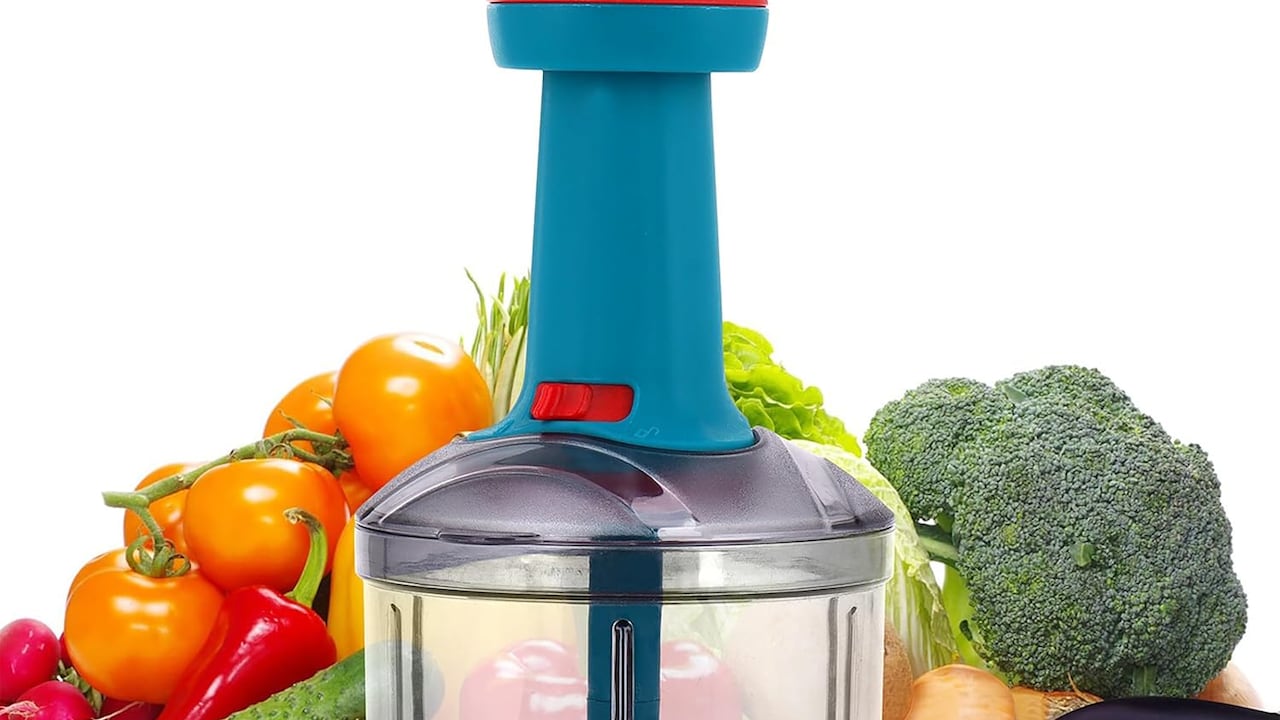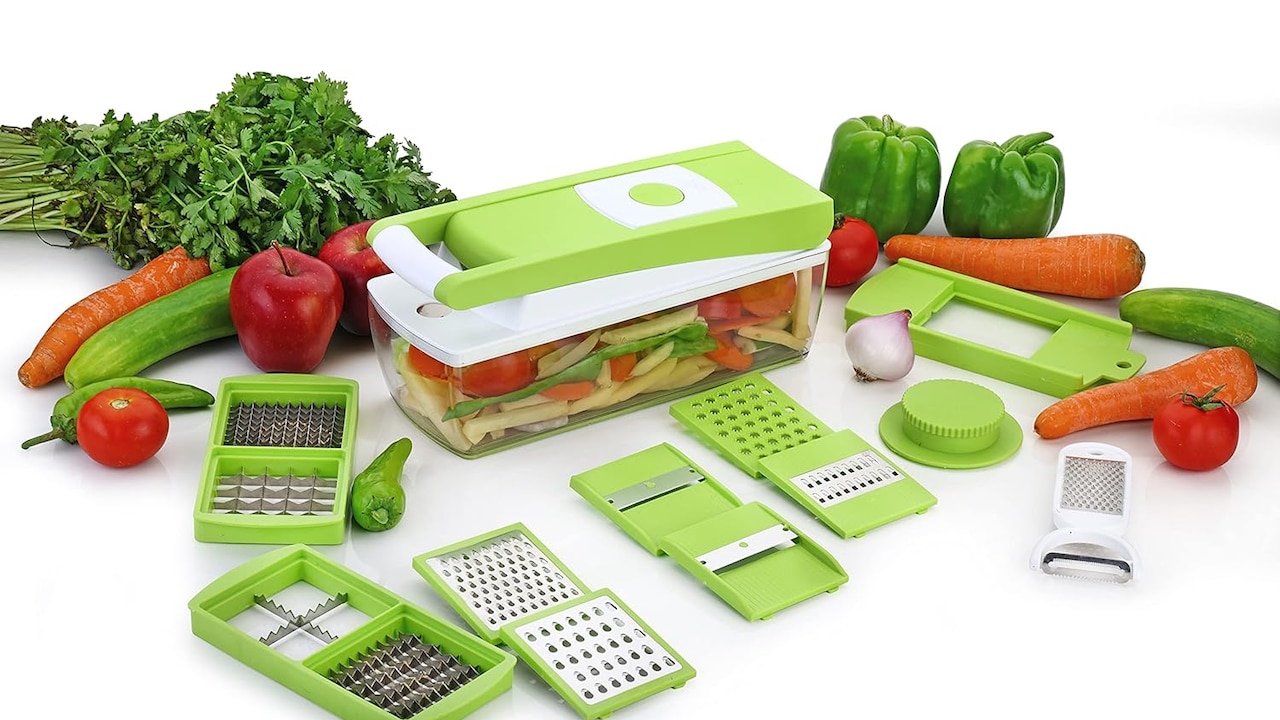Manual vs Electric Choppers: Which Vegetable Chopper Should You Buy?
Choosing between a manual and an electric vegetable chopper is a choice. Both promise convenience, speed and neat chopping, but the right pick depends on daily routine, cooking habits and your comfort level in the kitchen.

Manual vs Electric Vegetable Choppers: Which One Is Better for Your Kitchen?
A good vegetable chopper feels like a small victory in the kitchen. It trims prep time, cuts down the mess and keeps the hands free from onion tears. Whether it's a rushed weekday dinner or a leisurely Sunday feast, a dependable chopper can make cooking smoother. Yet the debate continues, manual or electric? One offers control, affordability and simplicity. The other delivers speed, consistency and hands-free convenience.
Both tools have earned a place in modern homes, especially where cooking is a regular ritual and sabzi transforms an ordinary day into something warm and comforting. With a wide range of models available, from budget picks under ₹300 to high-end appliances above ₹3,000, the choice can feel overwhelming. So, when it comes to manual vs electric choppers and you are debating which vegetable chopper to buy, here is all you need to know to come to a logical decision. This guide breaks down the essentials so that the next chopper purchased doesn't just sit in a drawer but becomes a true kitchen companion.

Best Vegetable Chopper for Home Use: Manual vs Electric Compared
Photo Credit: Amazon
Key Factors To Consider Before Choosing Your Chopper
1. Ease of Use: Which One Fits Your Daily Routine?
Manual choppers demand a small amount of physical effort, mostly pulling a string, pressing a lid, or rotating a handle. The charm lies in their simplicity. A few pulls, and vegetables transform into neat little pieces. For someone who enjoys keeping things straightforward and fuss-free, this feels natural. These tools don't need electricity, switches, or complicated attachments. Even a child old enough to help can manage the basic mechanism (with supervision, of course).
Electric choppers, on the other hand, thrive on convenience. Place the vegetables inside, press a button, and the machine takes over. It feels especially helpful during busy mornings when chopping stacks of onions and tomatoes for tiffin feels like a race against time. However, the reliance on electricity means they're less flexible during power cuts, something that still happens in many areas. The right pick depends on how much control and involvement you feel comfortable with each day.
2. Speed and Efficiency: Which One Saves More Time?
Manual choppers are surprisingly quick for small tasks. Chopping a handful of onions or tomatoes takes only a few pulls. For everyday cooking, where ingredients are handled in small quantities, the speed feels more than enough. But when the menu includes big batches, like prepping vegetables for pulao, biryani or hosting a dinner, manual chopping can feel repetitive.
Electric choppers shine when time is tight. A powerful motor can chop large amounts of vegetables in seconds. Imagine preparing masala bases for multiple dishes in one go. The machine handles it without breaking a sweat. For households where cooking happens several times a day, an electric chopper feels like a true time-saver. Still, it's worth noting that setting up the machine and cleaning it afterwards may offset some of that speed.
3. Control and Consistency: Which One Nails the Perfect Cut?
A manual chopper offers good control over texture. Pull fewer times for chunky pieces perfect for salads or chaats, and pull more for fine chopping suited to gravies. This flexibility appeals to anyone who enjoys adjusting textures based on the dish.
Electric choppers provide consistency, especially in finer cuts. Their blades rotate at a steady speed, which ensures uniform pieces. For making pastes, purees or finely minced onions for tadka, these machines work beautifully. However, they may sometimes over-process soft vegetables, turning tomatoes into mush before one realises.
Choosing between control and consistency depends on personal cooking style. Some enjoy seeing the texture and adjusting as they go. Others prefer letting a machine produce the same results every time.
Also Read: Best Manual Choppers For Quick Cooking: Easy, Affordable Tools For Every Kitchen
4. Maintenance and Cleaning: Which One Keeps the Hassle Away?
Manual choppers are usually easier to clean. With fewer parts, mainly a bowl, lid and blade, they rinse quickly under running water. Because they operate without wiring or electrical components, they can be washed almost anywhere, even in a bucket during water shortages. Many models also fit neatly into dish racks without hogging space.
Electric choppers require a little more care. The motor unit cannot be washed, so cleaning must be done carefully. The bowl and blades are straightforward to clean but need safe handling to avoid damage. Also, electric models tend to have more attachments, increasing the number of items needing cleaning after every use.
Maintaining hygiene is easy with both, but manual choppers win for simplicity and speed.
5. Durability and Lifespan: Which One Lasts Longer?
Manual choppers tend to be robust. With no motor or electrical parts to fail, they last as long as the plastic and string hold up. Even if components wear out over time, replacements are affordable. Persistent use, such as chopping hard vegetables like carrots, may strain them, but overall, they remain reliable kitchen companions for years.
Electric choppers usually come with a sturdier build quality. Strong blades, solid jars and quality motors ensure long life, provided they are handled with care. Rough use or chopping items too hard for the motor can shorten the lifespan. Power fluctuations also pose risks unless surge protection is used.
In terms of durability, electric choppers can last longer but require more attention. Manual choppers last well too, especially when used thoughtfully.
6. Affordability: Which One Fits the Budget?
Manual choppers are budget-friendly, often starting around ₹200 and rarely crossing ₹800. This makes them accessible for most households. The low price also means replacing them doesn't feel like a burden. For someone setting up a kitchen for the first time or buying on a tight budget, manual options deliver great value.
Electric choppers come at a higher price, usually between ₹1,000 and ₹3,000 or more. While the investment may feel steep initially, the time saved and features offered often justify the cost. Households that value speed and convenience may find the extra cost worthwhile.
The choice here depends on how much value one places on ease versus cost. Both offer solid advantages at their respective price points.
7. Space and Storage: Which One Fits a Compact Kitchen?
Many homes today have compact kitchens, where every inch counts. Manual choppers are compact, lightweight and can be tucked into small drawers. Their size makes them ideal for spaces where storage is already stretched thin.
Electric choppers require more space. The motor unit, jars and attachments need dedicated shelves or counter space. For kitchens with limited space, these machines can feel bulky. However, if organised well, they can become a permanent part of the cooking workflow, making them worth the space they occupy.
Space plays a big role in kitchen purchases. If storage is limited, a manual chopper fits better. If space allows, an electric one serves as a powerful addition to the kitchen.
8. Safety: Which One Feels Safer to Use?
Manual choppers feel safe because they operate without electricity. There's no risk of shocks or overheating. Their blades, though sharp, are enclosed inside the bowl, reducing the chances of accidents. Children helping with cooking can use them with guidance, as long as handling the blades is avoided.
Electric choppers come with safety locks, slip-resistant bases and automatic cut-offs. These features make them safe for adult use. Still, care is needed while assembling and cleaning, especially around the blades. There's also the usual caution associated with electrical appliances.
Both types are safe as long as they're handled sensibly. The comfort level varies depending on how much one enjoys working with gadgets.
9. Performance with Different Ingredients: Which One Works Better Across the Board?
Manual choppers handle soft and medium-firm vegetables well, onions, tomatoes, capsicum, cucumbers and herbs. Hard vegetables like beetroot and carrot require smaller pre-cuts and more pulls. For nuts, garlic or ginger, many manual versions perform decently but need careful handling.
Electric choppers manage a broader range. Their stronger motors handle dense vegetables more efficiently. They also excel at pureeing, mincing, and making smooth pastes. Tasks like chopping paneer, grinding soaked nuts or making chutneys are easier with an electric chopper.
For everyday sabzi prep, both work fine. But for diverse tasks beyond chopping, blending, pureeing or processing tougher ingredients, the electric version clearly stands out.
10. Convenience During Busy Days: Which One Truly Helps?
On rushed mornings, a manual chopper works well for quick tasks. It starts instantly, needs no electricity and finishes small chopping jobs within seconds. It's also silent, which is helpful when others are still asleep.
Electric choppers shine when the workload piles up. Whether preparing big meals for festivals, house gatherings, or simply batch-cooking to save time, the electric chopper takes over the heavy lifting. Its speed during demanding days makes cooking less stressful.
Convenience varies depending on lifestyle. A small household may find a manual chopper perfect. A family that cooks several dishes daily may appreciate the electric one more.

Best Vegetable Chopper for Home Use: Manual vs Electric Compared
Photo Credit: Amazon
Products Related To This Article
1. YFL home ChopLab Neo, Mini Electric Chopper for Kitchen
2. VOLTURI Chopper for Kitchen Use, Push Chopper with 3 Blades
3. Borosil Chef Delite 300 Watts Electric Chopper for Kitchen
4. Pigeon Press Chopper 900ml
5. Chopper for Kitchen Use, Sharp Stainless Steel Blades with Egg Whisk
6. AGARO Elite Rechargeable Mini Electric Chopper
7. Butterfly Premium Plastic Vegetable Chopper 600 ml Blue
Both manual and electric vegetable choppers bring unique strengths to the table. A manual chopper keeps things simple, affordable and easy to clean, perfect for everyday cooking in small quantities. An electric chopper turns meal prep into a swift, effortless task, especially when cooking often or in large batches.
Choosing the right one depends on routine, budget, cooking style and kitchen space. For some, the humble pull-string chopper remains a trustworthy companion. For others, the button-press convenience of an electric tool feels too good to resist. Either way, the right chopper isn't just a gadget, it's a small upgrade that makes cooking more enjoyable, efficient and satisfying.
(Disclaimer: This article may include references to or features of products and services made available through affiliate marketing campaigns. NDTV Convergence Limited (“NDTV”) strives to maintain editorial independence while participating in such campaigns. NDTV does not assume responsibility for the performance or claims of any featured products or services.)























